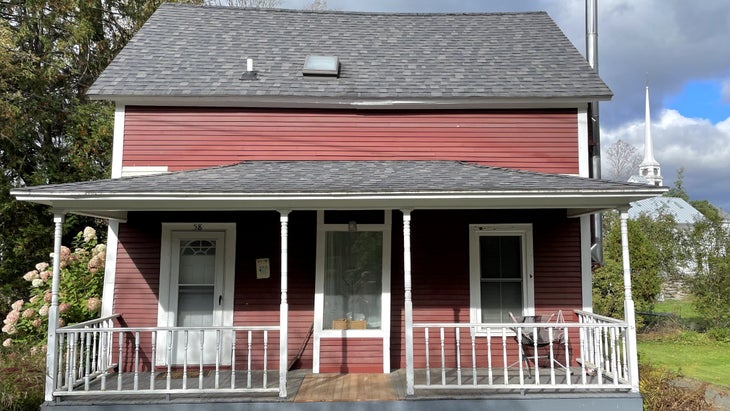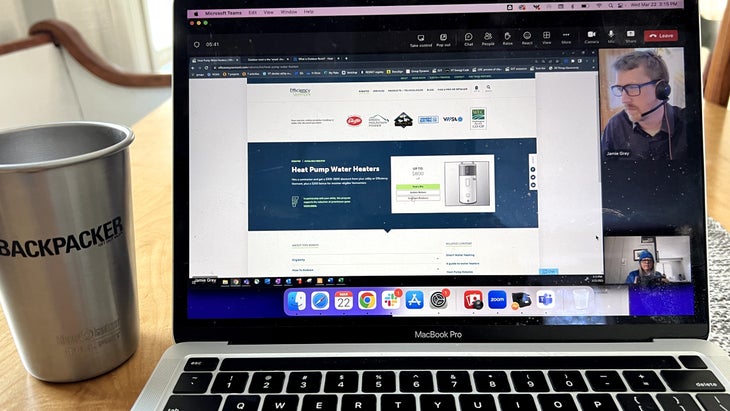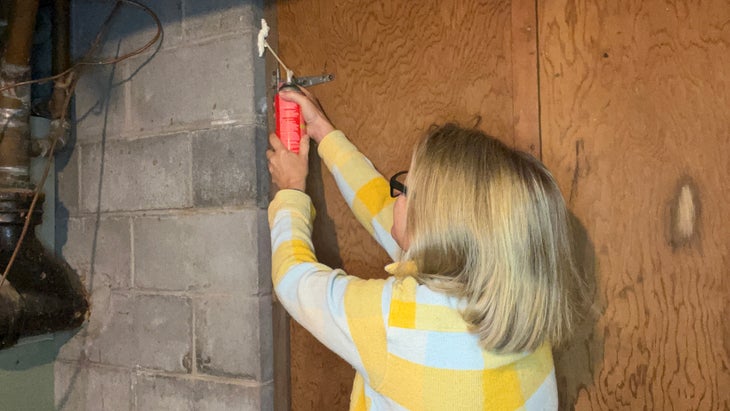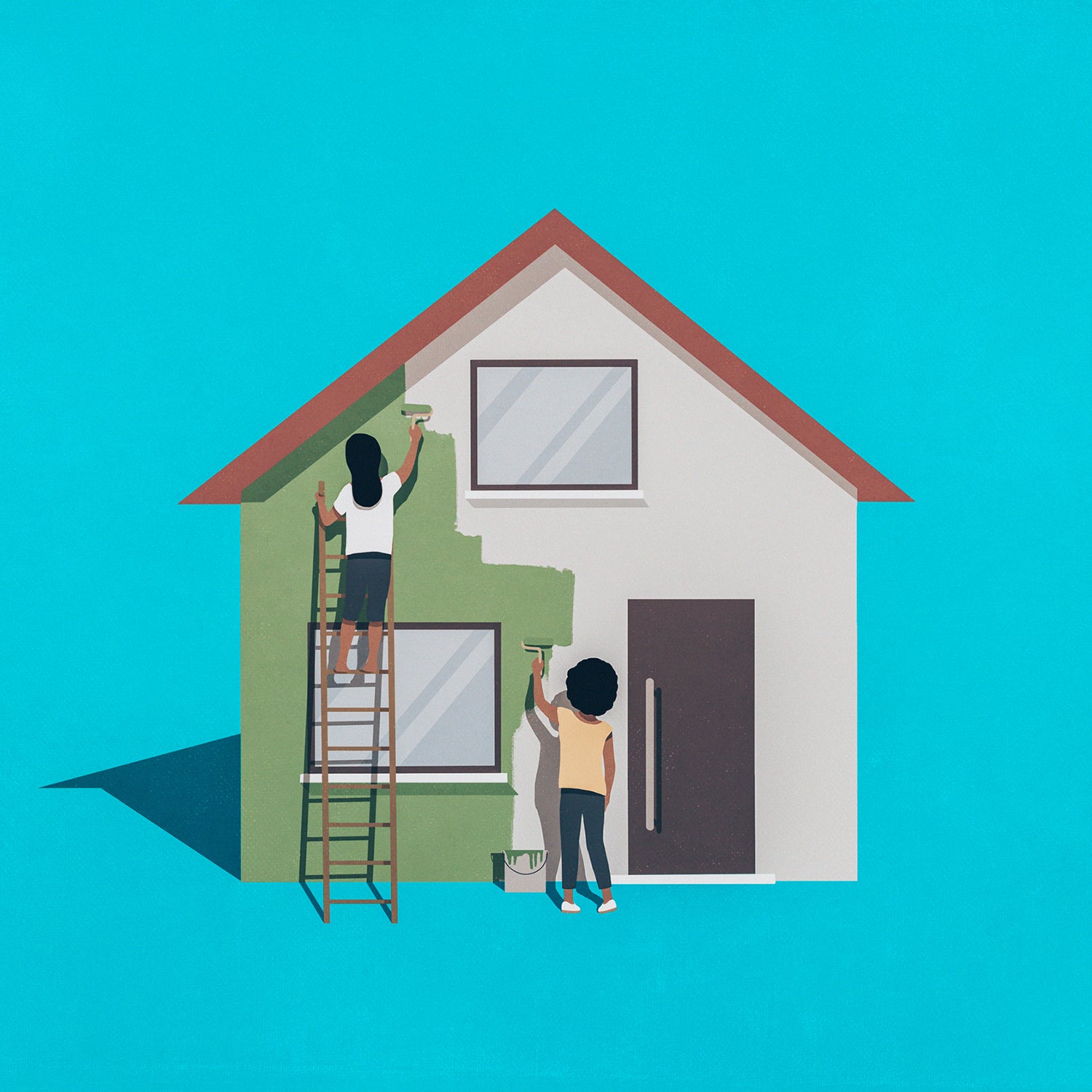What if I told you that you could save big bucks on your monthly expenses, make your house way more comfortable, and knock back your carbon footprint, all in one fell swoop? It’s true. I’ve got three words for you: home-energy audit.
It’s not as sexy as buying an EV or converting your house to solar power, but, with winter around the corner, taking a home-energy audit—and acting on it—will have an immediate positive impact on your life. Plus, you will be doing the planet a solid—and it’s a pretty low lift.
It all starts with a free consult—available through your local energy provider or a third party service. I went through the process recently and came away with a solid plan for action to upgrade my 123-year-old home in Stowe, Vermont.

What to Expect from a Home-Energy Audit
After tidying up as if a real estate agent was coming in for a tour, I sat down at my computer, clicked on a meeting link, and was screen-to-screen Jamie Grey. Grey is an engineering consultant for , a statewide energy efficiency utility, aimed at transforming the Green Mountain State’s energy landscape.
The purpose of our video call was to assess the energy efficiency of my 1,200 square foot historic farm house and find ways to save me money while reducing greenhouse gasses.
Jamie had done his homework. He had reviewed the ten-minute survey I took about my house: types of fuel used, age of the building, and what my basement and attic look like. But Jamie had also taken a photo tour of my house via old real estate records, taking note of the lack of gutters, the wood-burning stove pipe, the slatted rough-hewn wall boards, and the pitch of the roof.

For the next 90 minutes, I gave Jamie a video tour of the house with my phone. He asked me to get closer to the gaps between the wall boards, zoom in on the window sealing, and steady the camera on the service ticket taped to the boiler so he could read the details.
After the tour, we got down to business. Jamie provided a wealth of info and resources and incentive opportunities to make some key changes to my house. Making these three improvements will cost me in the ballpark of $8,000, but I can take advantage of rebates that Efficiency Vermont offers, so the cost will be substantially lower. Once complete, I’m likely to .
The Top 3 Takeaways from My Home-Energy Audit
Air Sealing Is Key
Air drafts are costly because they force a home’s heater to work overtime. You might think windows and doors are the primary culprits behind drafts, but the biggest air leaks happen out of plain sight—in the attic and basement. Jamie suggested using spray foam and caulking to create airtight seals around wiring and plumbing holes, hatches, ductwork and behind the knee walls in my attic. This is an project, and I got to work filling the gaps around my basement door and plumbing pipes. Because my attic is hard to access, I will hire a contractor to tackle that space. It will likely cost me a couple thousand dollars.

I also plan to schedule a blower door test, which is a way to diagnose exactly where leaks occur throughout the house. During a blower door test, a fan is installed in the front door of a closed home. The fan sucks the air out of the house, causing a pressure differential. As the fan pulls air from the house, it rushes in wherever it can, giving you a roadmap of where you need to add sealing. Blower door tests cost an average of $325, but rebates are often available to offset the cost.
Never Enough Insulation
Most old homes lack insulation in their attics, and mine is no exception. Heat rises, so proper insulation in attics, crawl spaces, and knee walls can prevent the heat I’m paying for from sailing off into the cold Vermont air. The EPA estimates that bumping up my insulation on my monthly heating bill. I’ll hire a contractor to add insulation, which will likely cost me . I’ll also ask him to evaluate my exterior wall insulation to see if there are opportunities to blow in additional material.
Heat Pumps Are the Future
If your furnace is old and in need of an upgrade (like mine), now’s a good time to consider converting to a heat pump. Heat pumps run on electricity—not fossil fuels—so right off the bat you’re reducing your carbon footprint. Heat pumps are a bit magical. They push hot air outside during the summer, but in the winter they pull in cold air and turn it hot through a cycle of evaporation and condensation.
Price-wise, heat pumps are already cost-competitive with traditional furnaces. The to install a heat pump in homes that already have ductwork is $5,500. But thanks to the Inflation Reduction Act, for $2,000 to $8,000 in rebates (depending on your household income).
With so many incentives and rebates currently available–check your local provider’s website for what’s available in your area–now’s the time to make these upgrades to your home. After the initial investments, you’ll immediately begin saving money…and carbon emissions.
Doing right by the planet can make you happier, healthier, and—yes—wealthier. ���ϳԹ���’s Head of Sustainability, Kristin Hostetter, explores small lifestyle tweaks that can make a big impact. Write to her at climateneutral-ish@outsideinc.com.


